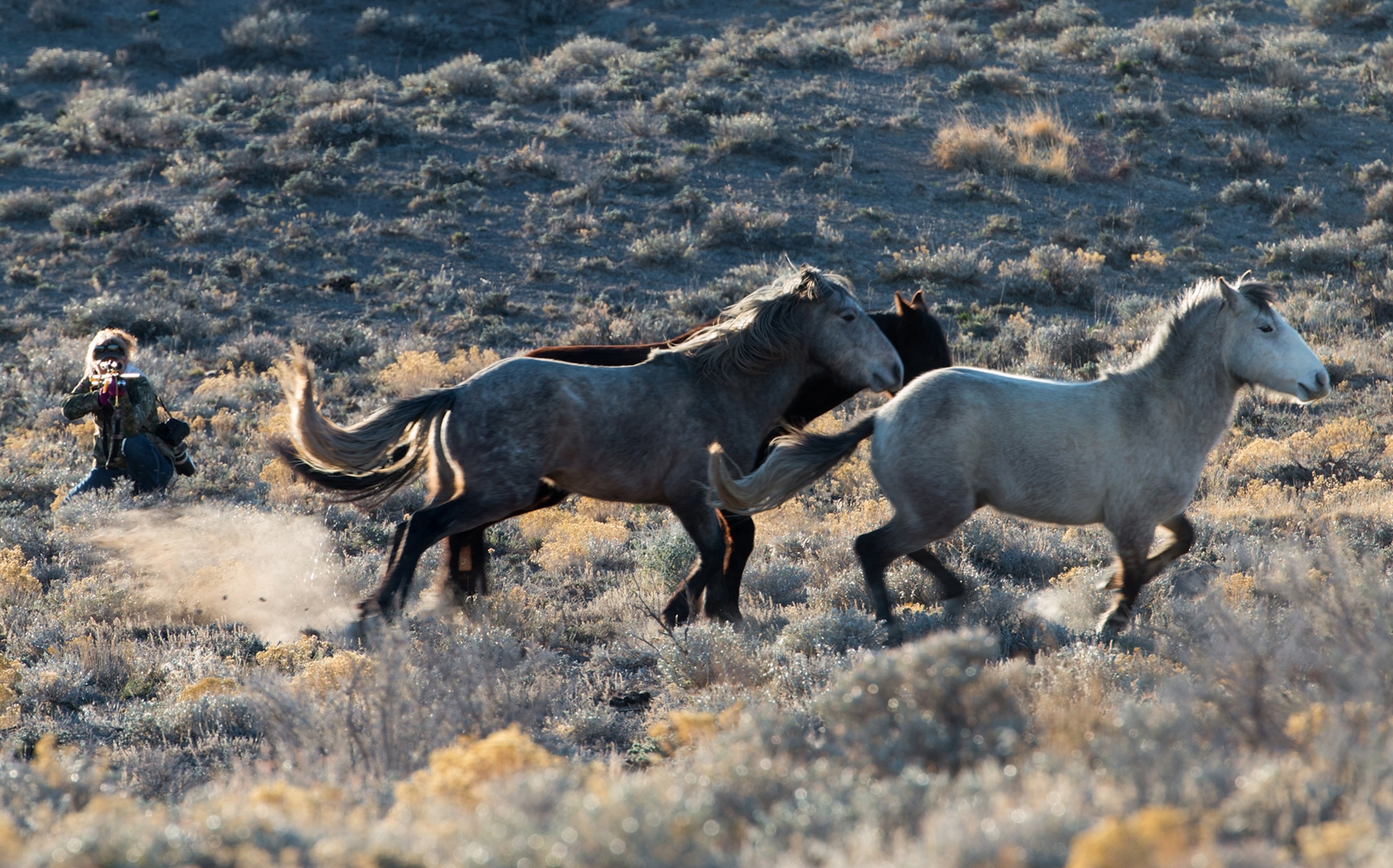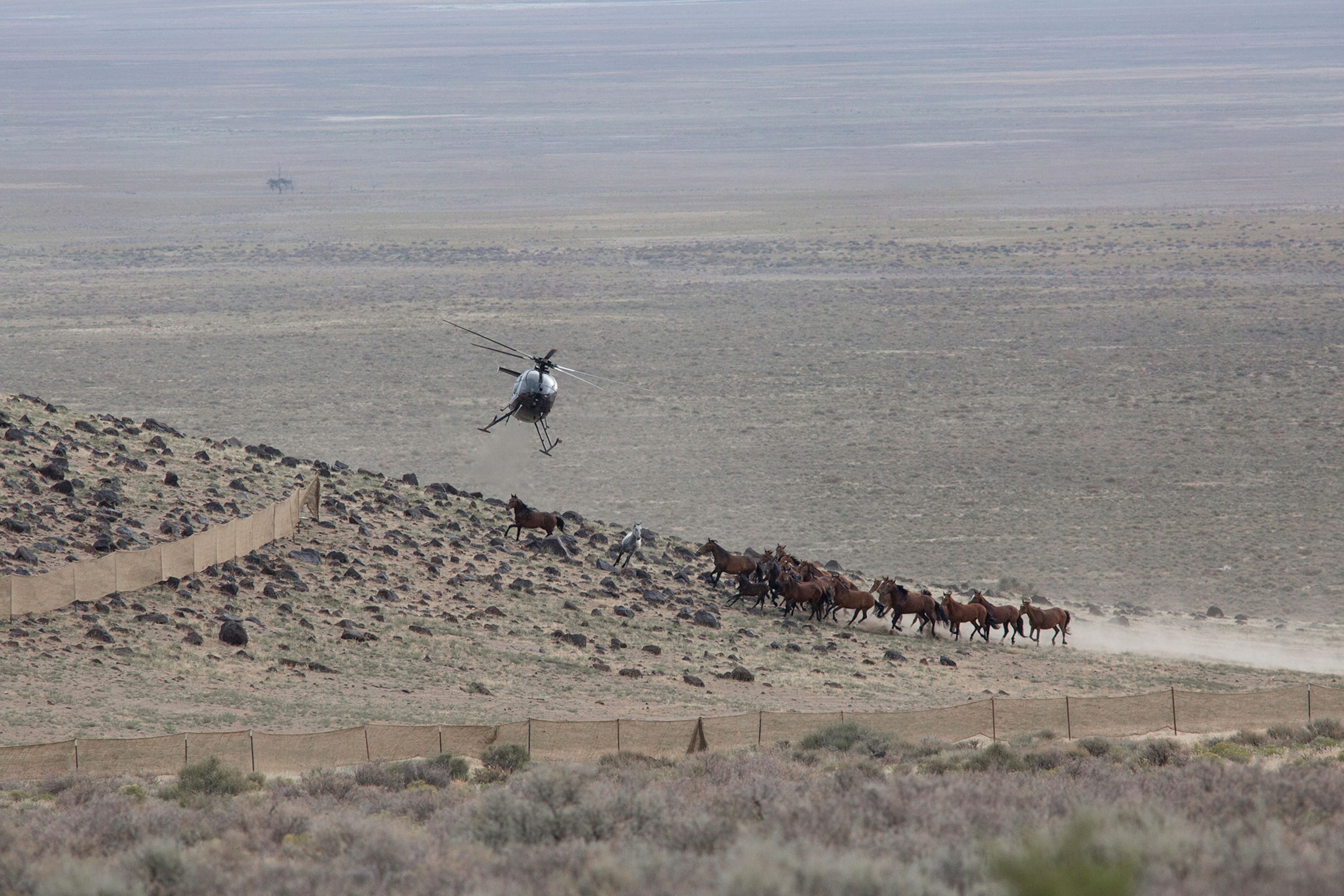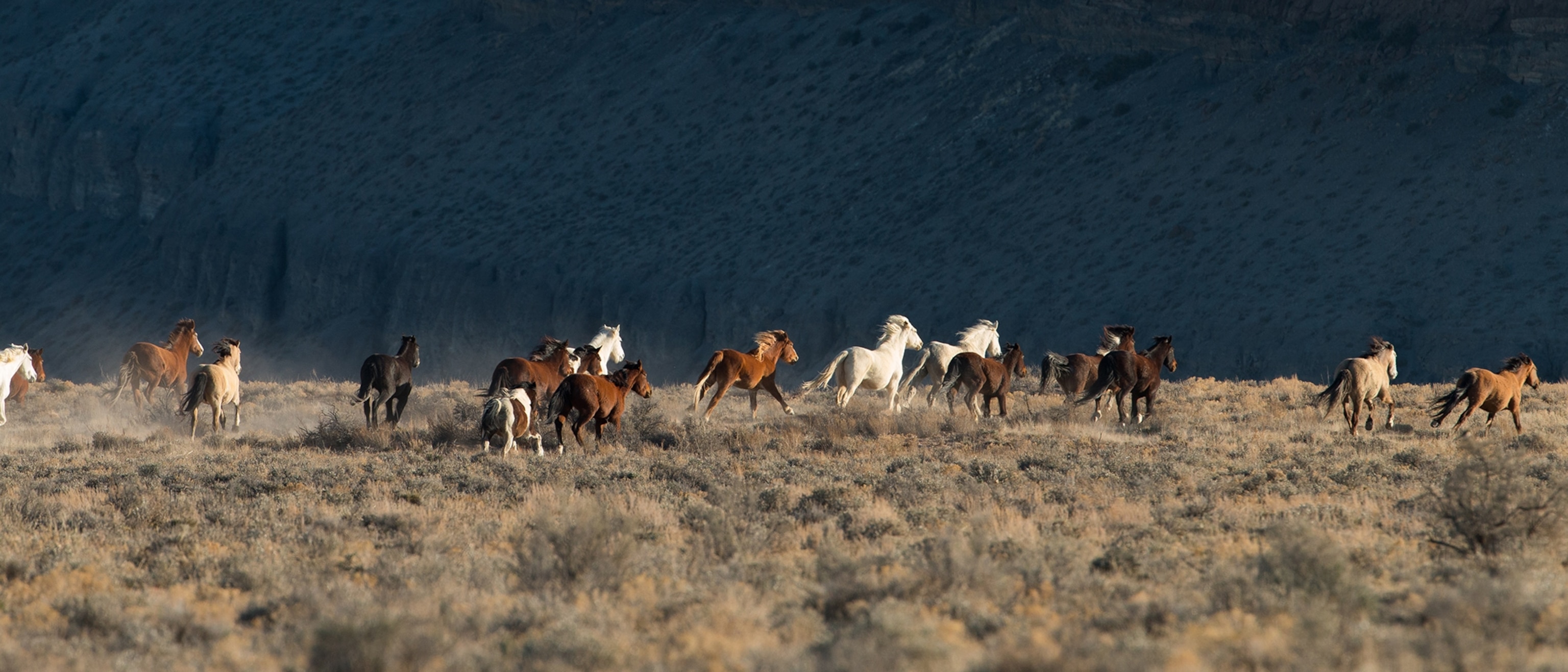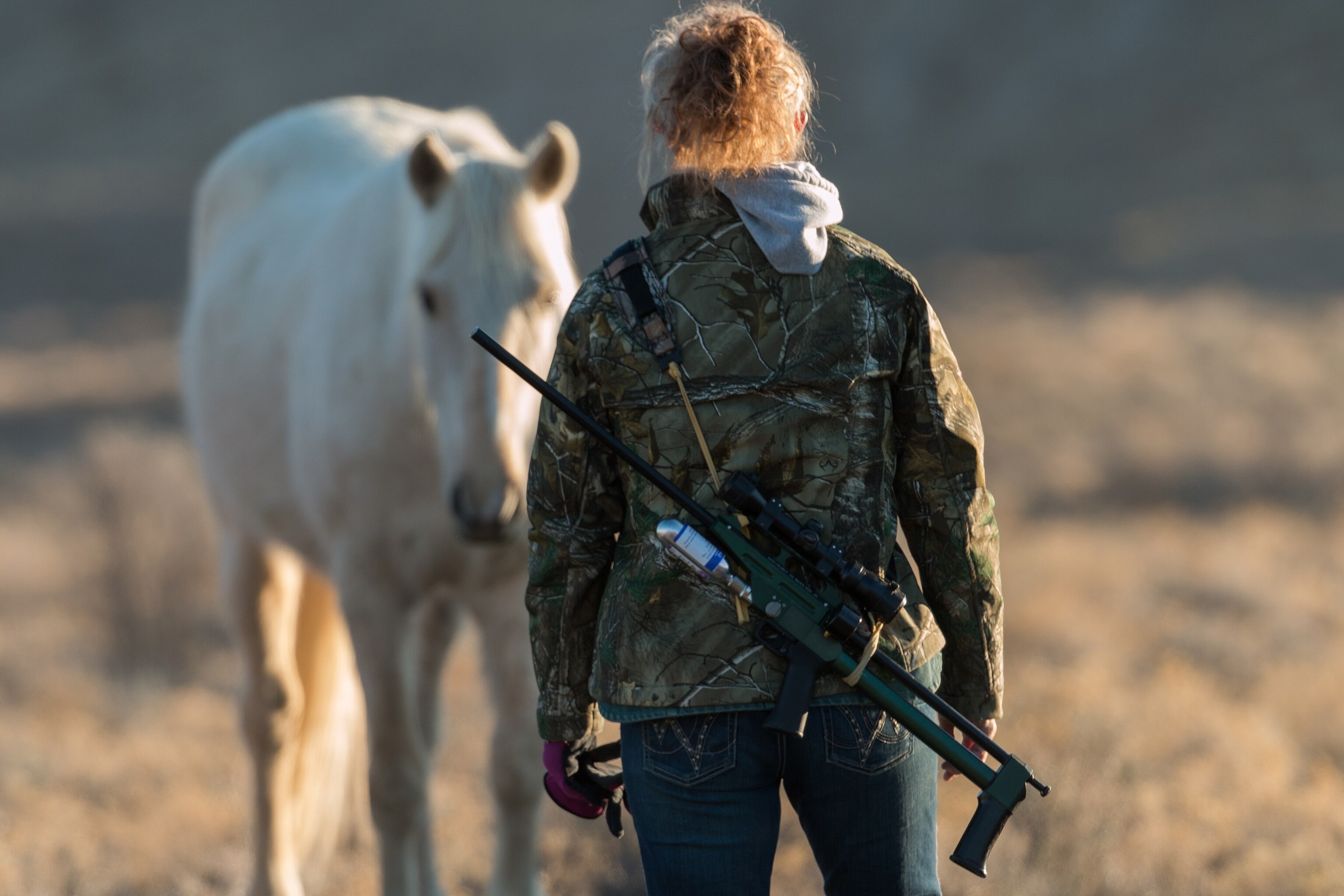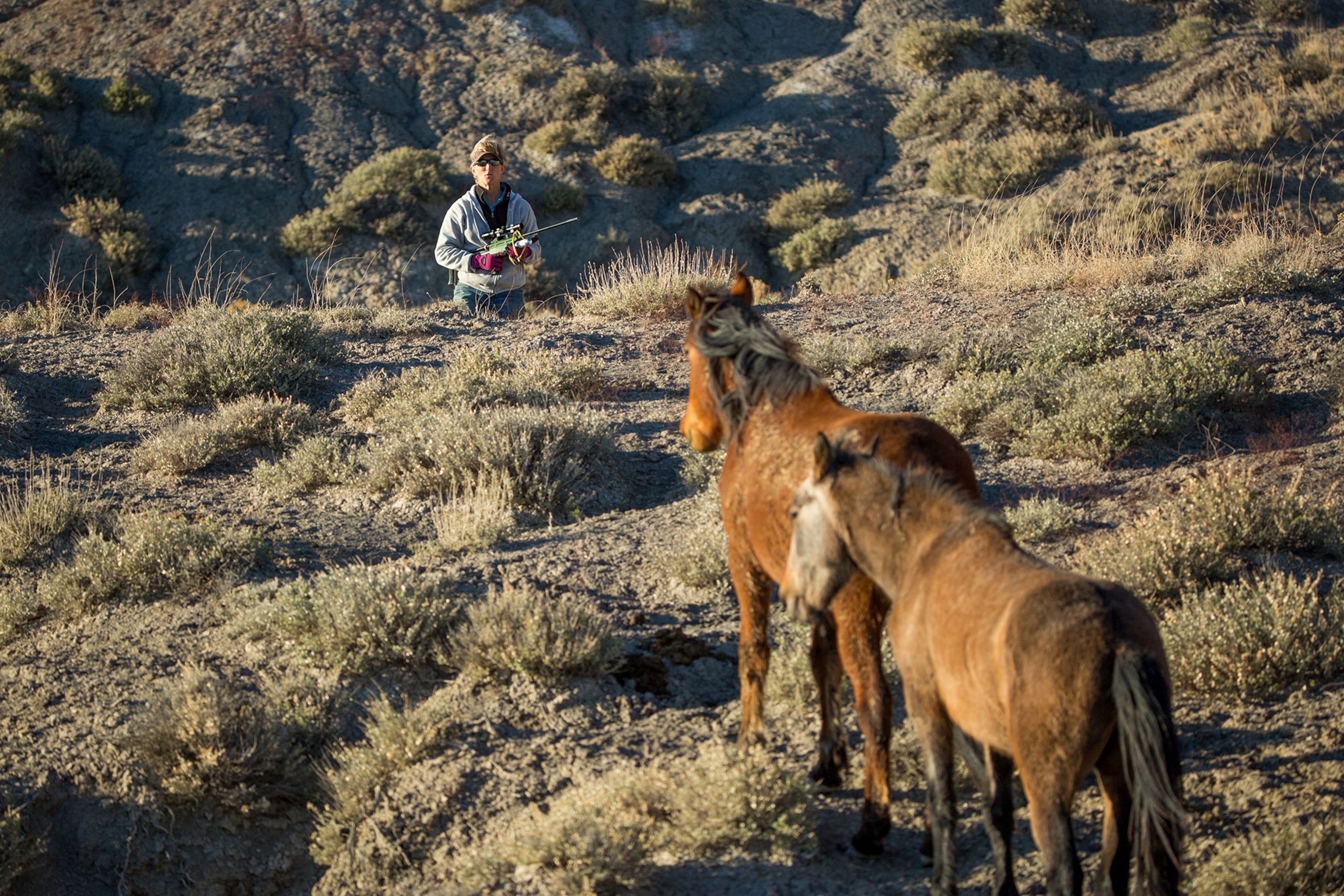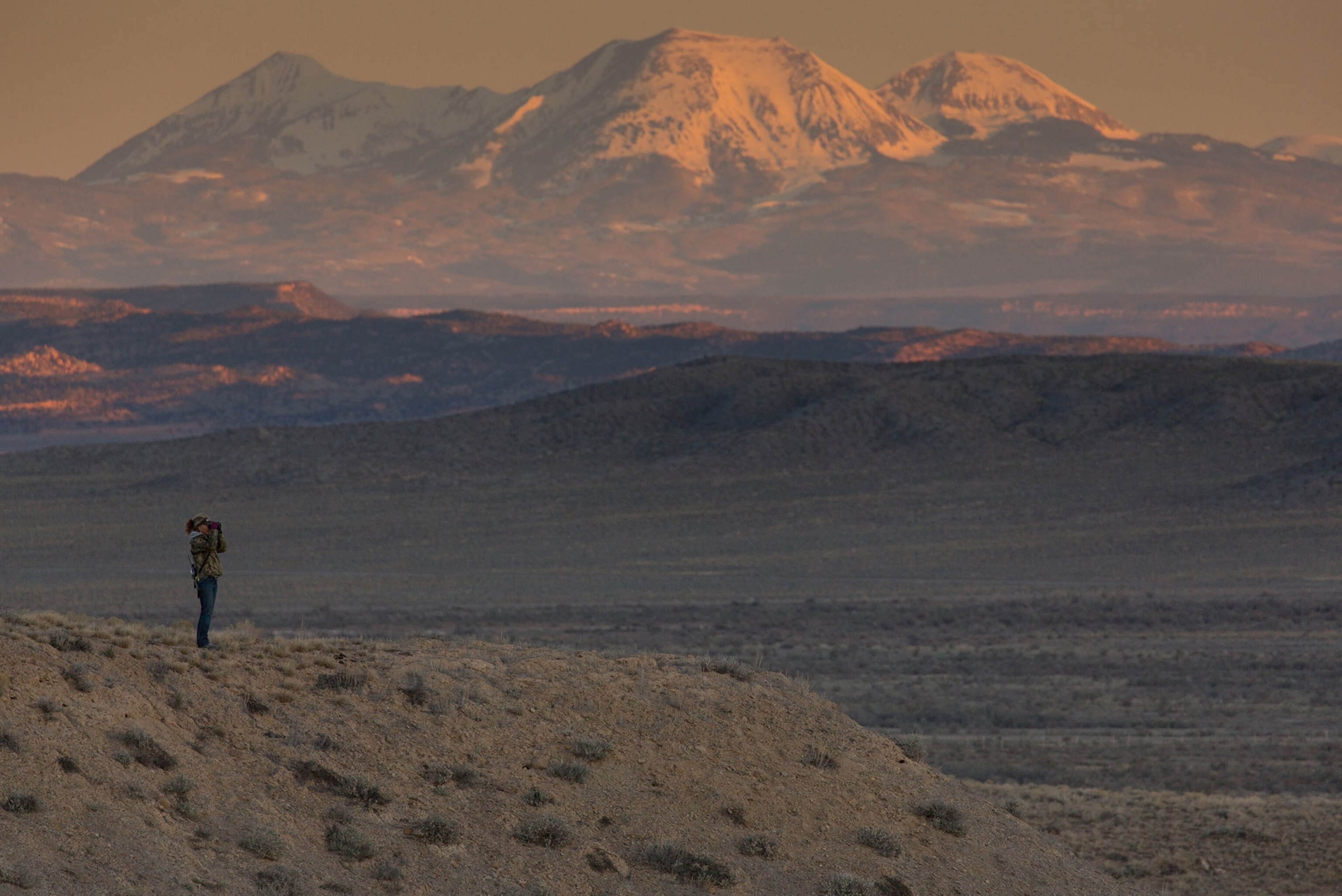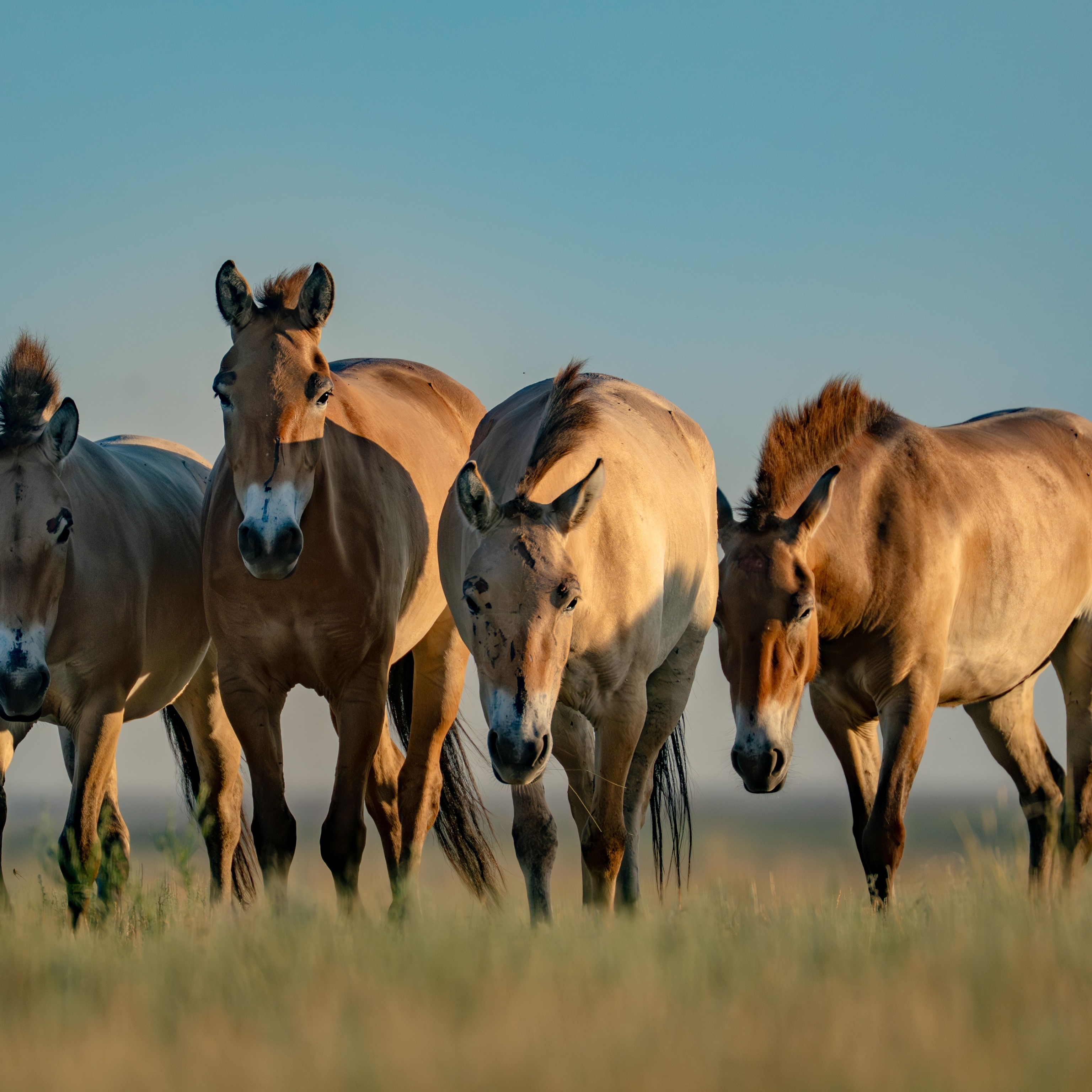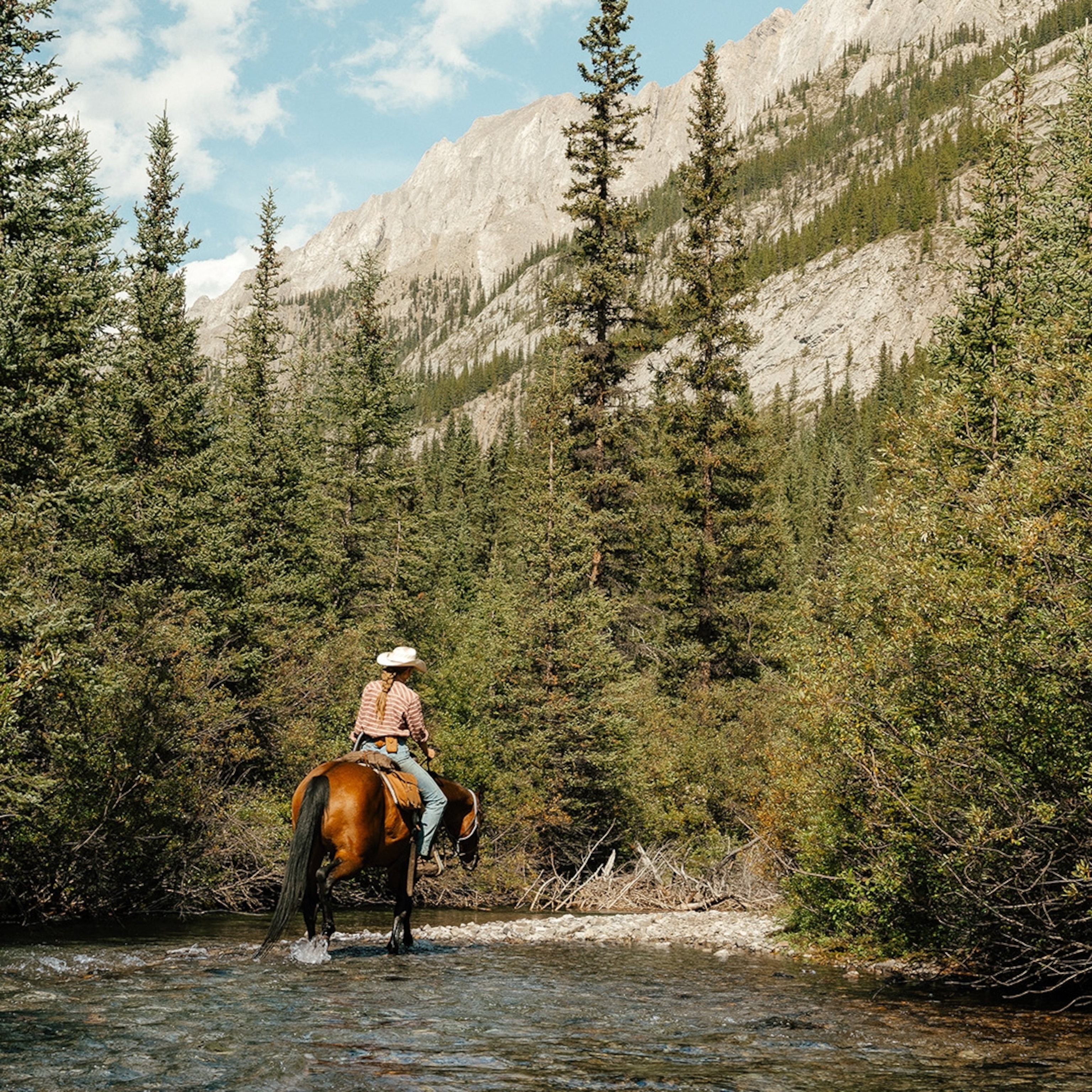Can Fertility Control Keep Wild Horse Herds in Check?
Advocate TJ Holmes believes temporary birth control—not constant, stressful roundups—is the key to maintaining some wild horse populations at sustainable levels.
TJ Holmes waited for a clean broadside shot before raising her rifle. She looked through the scope at the grazing horses, slowly exhaled as the crosshairs landed on her target, and squeezed the trigger. A dart flew from the air rifle and hit the mare smack on the hindquarter. The entire herd of horses moved 50 yards in alarm at the sound of the gun.
Holmes stayed still until the horses calmed down before picking up the dart. She walked back to our film team.
“Pretty amazing, isn’t it?” she said. “The PZP fertility control in this dart can keep a mare from becoming pregnant for a year, prevent a colt from being born, so that BLM doesn’t have to do roundups that lead to horses sitting in holding pens.”
Holmes, who grew up around horses, first visited southwestern Colorado’s Spring Creek Basin Herd Management Area in 2002. When she saw the horses at Spring Creek Basin, they inspired a love for the area and for wild horse photography, which she focused on for the next five years.
In 2007, Holmes reported on a BLM helicopter roundup in Spring Creek Basin HMA for the Dolores Star, a local Colorado newspaper. The BLM intended to remove 80 horses from the range to prevent overgrazing and damage to the ecosystem.
Holmes wrote about shocking scenes. The horses were terrified and split from their families. Plastic bags flapped noisily and scared the animals. Workers shouted at the horses before they were trucked away to a government holding facility. And even though the BLM promised not to remove Traveler, the area’s most beloved stallion, they trucked him away, too. After public outcry, Traveler was returned and still roams the mountains today.
As Holmes told her story to me, her passion and frustration grew.
“At the roundup, I asked a BLM person why they did it this way—with helicopters, chasing the horses—and he said it was ‘the only way to do it.’ I set out to prove him wrong. I visited Little Book Cliffs Wild Horse Range, witnessed a very calm roundup there with the help of committed volunteers from Friends of the Mustangs, and learned about the importance of documenting the horses to successfully bait trap or apply PZP fertility control.”
Following the roundup at Spring Creek Basin, Holmes began documenting the remaining horses there and learned to administer fertility control under the direction of Jay Kirkpatrick, a larger-than-life conservationist and wildlife-rights advocate who wasn’t afraid to tackle big problems. Kirkpatrick, who passed away in December 2015, founded the Science and Conservation Center in Billings, Montana and was also Holmes’ mentor. The two wrote a proposal that the Colorado Chapter of the National Mustang Association, Disappointment Wild Bunch Partners, and other groups submitted to the BLM. The paper encouraged the agency to adopt PZP fertility control to slow herd growth and reduce roundups.
The BLM refused the proposal for undisclosed reasons, though its suggestions would have saved the agency an estimated two million dollars over the next decade. It wasn’t until a local BLM staff turnover and, with the agency facing with the prospect of the 2001 roundup, that the BLM finally approved the PZP project in Spring Creek Basin.
Holmes got the green light to apply PZP. Since then, there hasn’t been a BLM roundup, there won’t need to be a roundup in the next few years, and the wild horses there live a dignified life on the range—not in a holding pen.
To learn more about PZP, I went to the Science and Conservation Center to take the three-day certifying class. Jay Kirkpatrick, the centers’ founder, recognized that one of biggest challenges in conservation efforts is controlling population sizes of large herbivores in confined areas. But rather than using culling, permanent sterilization, or roundups to diminish population sizes when animals became too numerous, Kirkpatrick encouraged fertility control. In collaboration with the Humane Society of the United States, Kirkpatrick advocated reversible PZP fertility control. PZP has been used successfully for dozens of species worldwide and with some wild horse herds for decades. His legacy continues with the Science and Conservation Center’s program to train land managers and volunteers to use PZP effectively.
How PZP Works
Zona pellucida is a membrane surrounding all mammalian eggs. The zona pellucida has different protein receptors, one of which attaches to sperm. The PZP vaccine is derived from the zona pellucida of pig eggs, and when it is injected into the muscle of the target female animal, it stimulates her immune system to produce antibodies against the vaccine. These antibodies attach to the sperm receptor of the target female and block fertilization. In short, PZP fools the immune system into producing antibodies that attach to the eggs and prevent sperm from entering.
For horses, PZP can be more than 90 percent effective, costs just $24 per dose, and lasts for one year. For the PZP to be effective, the target animal needs to receive a primer dose, a booster dose four to six weeks later, and an annual booster after that. If there is a population crash, the people administering PZP can stop giving the dose and allow the population to grow. Does it work for controlling some wild horse populations? Absolutely.
A Successful Case Study
The most famous example of PZP use in free roaming horses is at Assateague Island National Seashore off the coast of Virginia and Maryland. Without management, the population of horses at Assateague would rise to the point where they would jeopardize or change the ecology of the barrier island that they, and a multitude of other species, depend on. The National Park Service conducted vegetation surveys and biologists decided to keep the population below 125 to prevent overgrazing. The Park Service began applying PZP to mares on an annual basis.
To keep the gene pool as large as possible, each mare is allowed to have at least one offspring. The nearly 33-old program has been hugely successful. The horses, wildlife, and vegetation are on a sustainable path. The Park Service doesn’t have to do expensive roundups and adopters aren’t needed to take excess horses.
Back at Spring Creek Basin
For PZP to be effective on herds, it requires a lot of work, detailed documentation, dedicated volunteers, and a local BLM office willing to embrace those volunteers. Holmes knows every single one of the 62 wild horses in the 22,000-acre Spring Creek Basin HMA. She knows who their mothers are and which stallions lead different bands, and has photographed them extensively. Through her dedicated photography and documentation, she has familiarized the horses to her presence. She can get within 40 yards of the horses, her maximum comfortable distance for the PZP dart gun. When a filly is born, Holmes waits until she is two before administering the primer and booster doses. She works closely with Mike Jensen, the local BLM herd manager, and together they continue a program that is sustainable, remains affordable, and allows the wild horses to live their lives on the range in a herd that that doesn’t damage the delicate ecosystem.
Resources
Visit the Science and Conservation Center's website to get certified as a PZP darter and to volunteer for BLM.
Learn more or volunteer with two groups Homes works with, the Colorado Chapter of the National Mustang Association and Friends of the Mustangs.
Adopt a wild horse or burro through the BLM's adoption program.
- National Geographic Expeditions
“You’ve got to have the resources to enable the horses and the other wildlife to live here. If you don't have that, you don't have a healthy wild horse herd, you don't have a healthy elk herd, you don't have a healthy deer herd or pronghorn herd. I love these horses more than anything but you’ve got to have the range to support them or we won’t have any horses here,” Holmes told me. “The ecosystem is very fragile. The soil is very erodible. If it’s overgrazed, the vegetation doesn’t come back, or if it does come back, it’s not the preferable plant species coming back. This country was built on the backs of horses, mules, and burros, they’re a part of the American Western landscape, and they’re important to keep because they’re a part of our culture and our history.”
“I cry when I shoot the horses. I don’t want to hurt them. I’ve known most of the horses since they were born. But I damn sure don’t want them to end up in holding pens,” she added. “They’re managed. Let’s take responsibility for that. I know these horses, I know their colors, I know their markings, and I figured I can contribute to doing something. This is where I landed and this is the herd of my heart. That’s why I do what I do. These mustangs are my life.”
For decades, the BLM has been reluctant to embrace fertility control. In many cases, the agency has prohibited wild horse advocacy groups from establishing PZP programs. In recent years, though, local BLM offices have been more receptive of local advocacy groups documenting and darting wild horses. While PZP fertility control undoubtedly works on smaller herd areas with dedicated volunteers and well-documented, approachable horses, is it feasible in herds with thousands of flighty horses that look similar to each other in an area half the size of Yellowstone with few roads? It would certainly take a different approach.
The next story in this series will describe what options land managers in other parts of the world have to control populations of large herbivores, and what options the BLM employs in its wild horse herds.
Ben Masters is a filmmaker, writer, and horse hand who splits his time between Bozeman, Montana, and Austin, Texas. Masters studied wildlife management at Texas A&M University, is a proud owner of six mustangs, and serves as wildlife management chair for the volunteer BLM Wild Horse and Burro Advisory Board. Masters is best known for Unbranded, an adventure documentary where he and three friends adopted wild horses and rode 3,000 miles across the American West to inspire people to adopt mustangs. This four-part series and short film presents his experiences, research, and interviews on the controversial wild horse issue in the United States.

